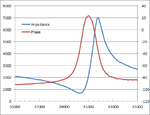afr123
Junior Member level 1
Hi,
I have a basic question.
Suppose my op-amp supply voltages are +/-12V and the input signal is 10V ac signal. Now if the gain (set by feedback and input resistor) is lets say 5. What would be my output? I think the opamp should clip the voltage above the max. supply and below the min. supply. If this is the case, will it damage the op-amp?
Thanks
I have a basic question.
Suppose my op-amp supply voltages are +/-12V and the input signal is 10V ac signal. Now if the gain (set by feedback and input resistor) is lets say 5. What would be my output? I think the opamp should clip the voltage above the max. supply and below the min. supply. If this is the case, will it damage the op-amp?
Thanks
